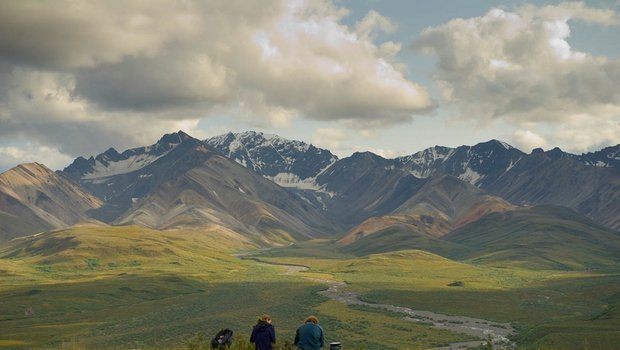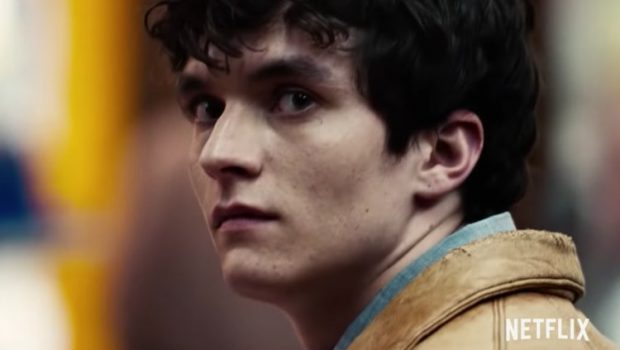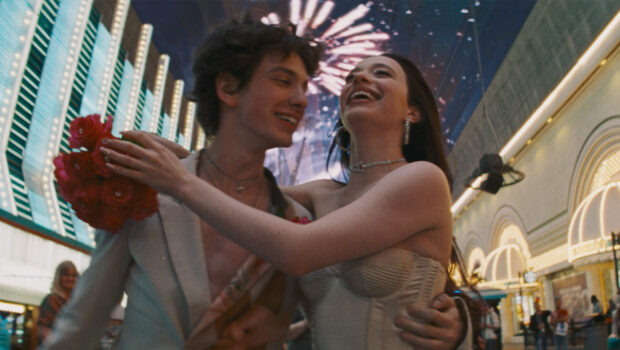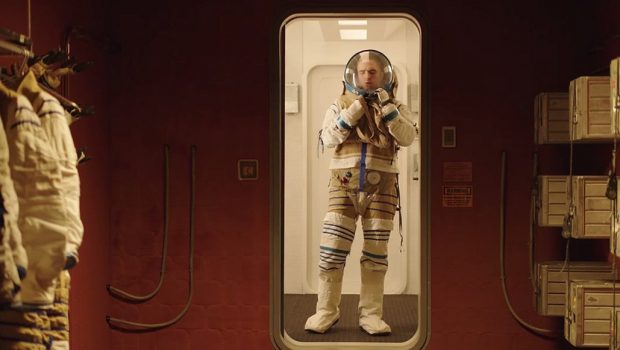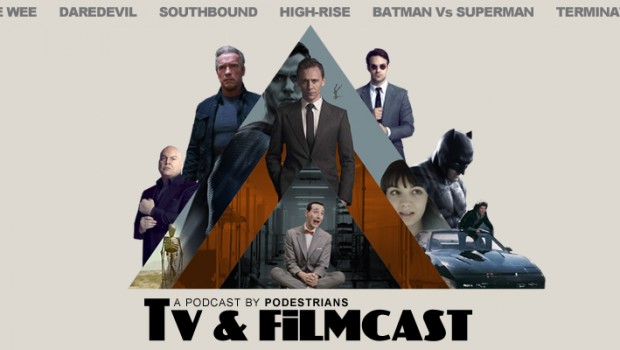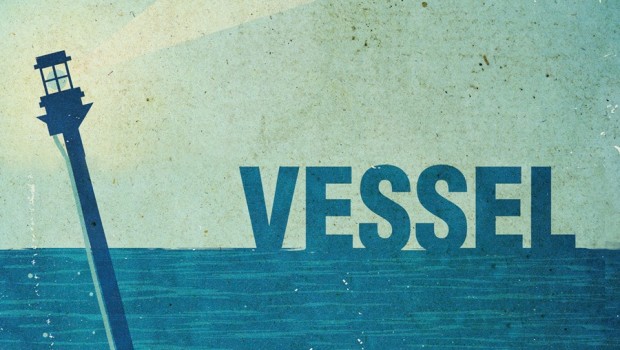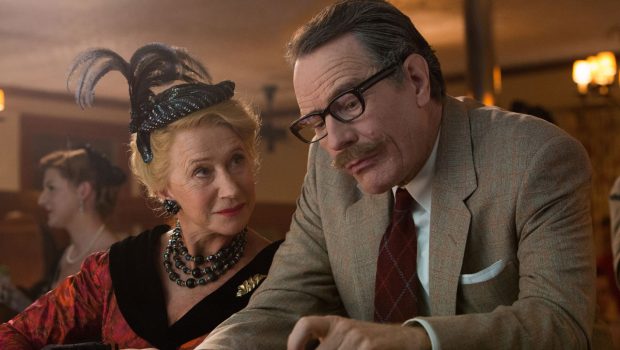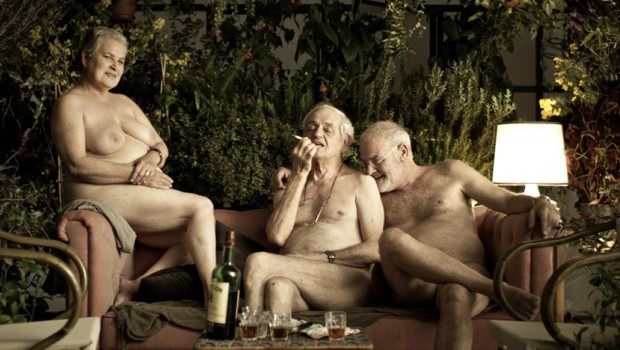Wildlike
Frank Hall Green
When it comes to film, I like to shed all of my expectations before I enter the theater. This year at the Worldfest-Houston International Film Festival was no exception. I even took the “blank slate” mindset a step further and avoided reading the synopsis of the film I was about to go see, Wildlike. I was taken on a voyage of solitude, shame, and confusion that was constantly juxtaposed with beauty, peace, and healing. Set in the breathtaking landscapes of Alaska, Wildlike is about a 14-year-old girl, Mackenzie (Ella Purnell, think young Angeline Jolie from Maleficent), who faces the deep torments of sexual assault after she is left under the care of her uncle (Brian Geraghty) in Juneau. Mackenzie decides to run away and return to Seattle in search of her mother, but instead she finds Bart (Bruce Greenwood), a widowed backpacker preparing to hike across Denali. While Bart does not invite Mackenzie to tag along at first, her desperate persistence blooms into an unexpected, nurturing relationship of emotional recovery and trust.
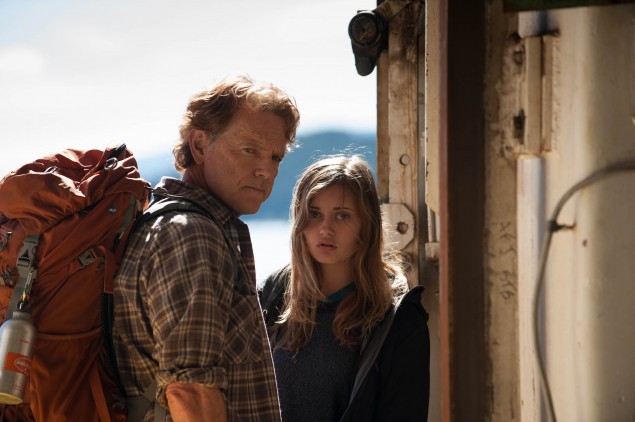
Writer and first-time feature director Frank Hall Green stepped in front of the audience after the film to talk about the different shooting locations and production process. It is rare indeed to come across a director who is not driven by the sensationalism or money behind a film; Green was both passionate and down-to-earth. Thus, we were able to find the aura of his story reflected in his words.
The following is an exclusive interview for Literal.
***
Lorís Simón Salum: I think I am most interested in your script. Can you tell us how it originated, how the story began to take shape? Was it meant to be something else at the beginning, or did you always envision it as it is now?
Frank Hall Green: The origin of Wildlike came from several aspects of my life and interests. The social issues in the film have become important to me over time, and I became dedicated to presenting certain issues in a truthful, effective way. I had not seen sexual violence on a teen presented in the way I was often hearing about it. As an issue, it’s underrepresented and too easily discarded as a plot device in film and TV storytelling, especially when you consider the scope of how many girls and women are affected and the grave damage done to a person in all related circumstances. I first heard about an intimate account of sexual assault from a friend as a teenager. I kept hearing people’s experiences with it, particularly women, over the years. And of course there is always something of it in the news.
I wish I could recall more clearly each step of the development of the story. As a first draft, Wildlike was largely as you see it on screen. The development happened in my head and in an outline. I ruminated the idea of Wildlike for months, originally I wanted to tell a story about someone on a trajectory into Nature – and perhaps that would be the Northwest or even the Southeast or the far end of Long Island! But then I realized I really wanted the landscapes to speak to this, and Alaska popped into my mind and stuck (having already been there). I knew the Alaskan landscape was beautiful and held great value for the production. At first there would be a brother and sister, even younger than Mackenzie, running from a household, not a bad one, but one with sexual assault, despite all else. In my mind I simplified things to just Mackenzie, and at that time I realized I really wanted to focus on the perpetrator and make his only fault that he sexually abuses her —albeit enough of a fault to erase all good aspects of him! So, over time I married the idea of adventure, being lost in Alaska, and healing in Nature with the social issue of the film, which in turn would be the cause of Mackenzie running away, allowing me to explore deeper characters and present issues important to me in the film.

LSS: There is not a lot of dialogue throughout the film, but I think the imagery has a voice of it’s own that reflects the characters’ inner journey. Out of all the hiking locations around the world, why did this one speak to you the most?
FHG: As a backpacker and lover of the outdoors and adventure, Alaska was an easy choice for a backdrop. I took a trip there in 2003. I backpacked in Denali with my wife and went to some of the same places Bart and Mackenzie go to. As a person and a storyteller, I have always turned to and been attracted to journeys and tales of adventure, especially directionless journeys, and the idea of running and fleeing, uprooting your life. As a child I daydreamed of a journey, running away; not from anything, but for excitement. As an adult, virtually all my nighttime dreams are aimless adventures. As a human being, and one who has experienced pain and healing in my life, I wanted to speak to the human condition as a dichotomy of damage and healing, trauma and recovery, darkness and light, and the reality that this fluctuation is a daily and lifelong experience.
Having said that, the film is set in Alaska because it’s an American story and you can’t get fully lost in the USA except in our last frontier. Furthermore, the word frontier is so meaningful for Americans; it means adventures and people seeking something, even people seeking refuge. Frontier is also a great metaphor for the momentary innocence that a young person, briefly and preciously, has in their life —which of course, in Mackenzie’s case, is despoiled early and crudely. Denali National Park as a backpacking location is iconic and grand, and frankly, I already had experience going there. I could have easily put her in far more difficult circumstances and locations in Alaska, but there was a wonderful contrast in the idea that all the people around her would be tourists and hikers and thrill seekers, looking to get pleasure from their trips, while Mackenzie was under great pressure and distress despite the wide-open, beautiful surroundings.
LSS: I understand you bumped into a fair amount of wildlife while on location. Was this something you were expecting before you made the trip? I am also wondering if these encounters added anything to the spirit of the film.
FHG: On my first scouting trip to Alaska, (in which I personally followed Mackenzie’s path: landed in Juneau, hiked the glacier there, took the ferry to Whittier and went to Denali and then around the Southeast of the state) I encountered wildlife as the idea of nature, animals in nature, animal instincts and animal sexual behavior. They all seemed to have a place in the story and in the themes of the movie. Whales appeared off the ferry. A black bear shot across the road in front of me. I would quietly find a moose in the river on a hike. Caribou seemed to dot the landscape of some areas. In fact, a Caribou jumped in front of my car twice and trotted down the road before my car for a good quarter mile. I was just driving behind them, like they were part of the traffic. There is a video online of it. The producers came back to Alaska with me repeatedly, then finally we brought the crew and cast up to take Mackenzie’s journey yet again; a plethora of animal sightings and encounters accrued, but the moments never lost their awe. The crew and cast received fantastic new scenery and animals on an almost daily basis. Everyone was gung-ho for what we were doing and where we were going. We all understood at last the distance and grandeur of Mackenzie’s journey. They had a great time and I think they would all confirm it had a great deal to do with the spirit of the movie.
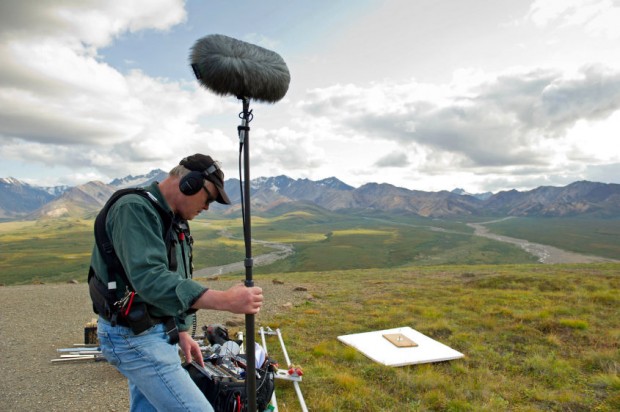
LSS: Ella Purnell does a magnificent job as Mackenzie. When she sits in silence, you can see the pain she carries with her although when she speaks, the voice of a typical, rebellious 14-year-old comes out. You really understand her process and the duality within her. How were you able to convey such a strong emotional state to her? Was it difficult to immerse her in the subject matter?
FHG: Ella and I spoke often about the character and she saw many drafts of the script. I provided her with reference films to explain the style, tone and mis-en-scene of Wildlike that I wanted to achieve. I sent her a great deal of materials on sexual abuse, which were disturbing for us both to absorb. She also took it upon herself to do research and speak with survivors. I definitely communicated to her the gray line between innocence/girlhood and pain/anger/shame. She had lots to consider in her mind. I told her what emotions I thought reigned in each scene. When fear was present, and how it was driving something, but not always driving the same thing! There is plenty of compartmentalization that the character subconsciously undertakes: first, she is a teen girl with all the spirit, desires and fresh perspective typically associated with that. Second, she is a budding teenager with her own sexuality coming upon her, wherein she notices males in a different way and cannot help but feel the power of her beauty and sexuality. Third, she is in great pain, traumatized, locked up inside, secreting away the shame, confusion, guilt, etc. that comes with sexual abuse. She must flip between these states and attitudes, and how she presents herself to survive. To Uncle she is one person, to Tommy another, to Bart another and to Ann Dowd’s character, Jeanie the kite woman, yet another!
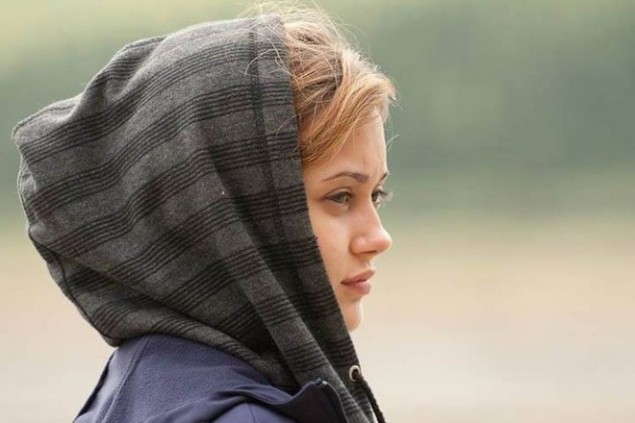
LSS: I really enjoyed seeing a male figure as her mentor. especially since this mentor was closer to her uncle’s age than to Mackenzie’s. Many times, people see the problem of sexual abuse as a women’s issue in which men are the enemies. I love that you reconcile both sexes in this story and turn our attention towards the process of healing together. I wonder whether you considered any gender issues as you wrote this film?
FHG: There is so much to say about the idea of a male figure and the fact that Mackenzie encounters and is rescued by a male. For me, Mackenzie’s eventual savior in the film had to be a male because it is her relation to males that she must confront. And, yes, it is men who must participate in stopping the ongoing problem of sexual assault, even the sexual assault of a woman they don’t know by a man they don’t know. Men have to stand up for their gender and explain to other men that yes, we are guys and we can be sexually attracted to women and pursue them and make jokes, but there is a line. Sexual assault is happening all around us, and we need to understand just how deeply a girl or woman is wounded by it, and finally put a stop to it where we see it developing. Men must be safe people to find solace with.
It’s ironic, but the ages of Uncle, Tommy and Bart are somewhat less important than how each of them reacts and what kind of safe or unsafe relationship they enter into with Mackenzie. For example, Tommy means no ill will, nor does he mean to take advantage of her. He could have been a plausible “summer young love” were she older and maybe he younger; but she is under trauma and despair. She’s not capable of being a girlfriend. Also of note: the one female character, Jeanie the kite lady, is meant to represent a grown, mature woman who has accepted her issues and lives her life regardless of her gender. She is not motherly, nor is she unkind. She is not a rough lesbian pilot, nor a wife, nor fragile. She is just a person comfortable in her own self. This story and the associated research has caused me to think about gender issues a great deal and expand my understanding and interest in women’s issues. I just joined UN Women’s HeForShe campaign and several of my new scripts are female lead characters.
LSS: How did it feel, directing your first feature film? Will you continue to work on more films?
FHG: For me, there is something precious and singular about accomplishing one’s first feature narrative film. There has been no other project nearing the importance of this one, and I doubt there will be another film that I will relate to with the same excitement, anxiety and diligence. Not that I might not care about a project more, but I will never again engage in the process in the same way and with quite the same naïveté (which I think is normal). What I find rewarding is that my strong diligence in the making of the film paid off. Naturally, one would do the best they could with a feature, but I think there is a perspective of humility, care, and awareness that is crucial. I am student of film, and always will be. There is nothing I can or could have pointed to that insured Wildlike turning out to be a great (much less good) movie. My persistent message to myself is that in order not to fail in any number of ways, logistically and creatively, is that I must be diligent, humble, second-guess everything, and go above and beyond in all areas. This never ceased —it still has not. In relation to this, the film has to be worth it. And to me, that means different, fresh, original, and meaningful. People have called Wildlike genre-defying and not comparable to any other films. These comments to me are a stretch, but I do believe Wildlike is unique, and I created it with that intention. Filming across thousands of miles of Alaska, with planes and bears and mountains, shows there are events in a manner that you do not see very often in film. Even though I obviously cannot compare the project to other feature directing projects, I can say that I have often over-reached and gone after ambitious productions without success. I have made several short films, but even making an ambitious short film does not have the exhaustive nature that pursuing that a feature does. So directing and completing your first feature is a beautiful thing but not without work! I’ve undergone elated and distressful feelings, sometimes right at the same moment. For a writer/director it is especially emotional, because you are forced to rework your precious vision and screenplay all the way through into the editing room and realize a final product that was once a kernel of an idea or image. This is the tremendous benefit for a director who is a writer, and counts himself or herself as a practicing (learning) filmmaker.
 Lorís Simón Salum is a psychotherapist in private practice in Houston, TX. She is the author of Ensoulment: Exploring the Feminine Principle in Western Culture (2016), as well as the film director of the multi award-winning documentary Ensoulment: A Diverse Analysis of the Feminine in Western Culture (2013). She was the Creative Director for Literal Magazine for over 10 years. Some of her projects included Literally Short Film Festival, Literal’s short international film festival, and Literally Everything, Literal’s podcast. You can find her at www.lorissimon.com.
Lorís Simón Salum is a psychotherapist in private practice in Houston, TX. She is the author of Ensoulment: Exploring the Feminine Principle in Western Culture (2016), as well as the film director of the multi award-winning documentary Ensoulment: A Diverse Analysis of the Feminine in Western Culture (2013). She was the Creative Director for Literal Magazine for over 10 years. Some of her projects included Literally Short Film Festival, Literal’s short international film festival, and Literally Everything, Literal’s podcast. You can find her at www.lorissimon.com.
Posted: June 8, 2015 at 10:59 pm


